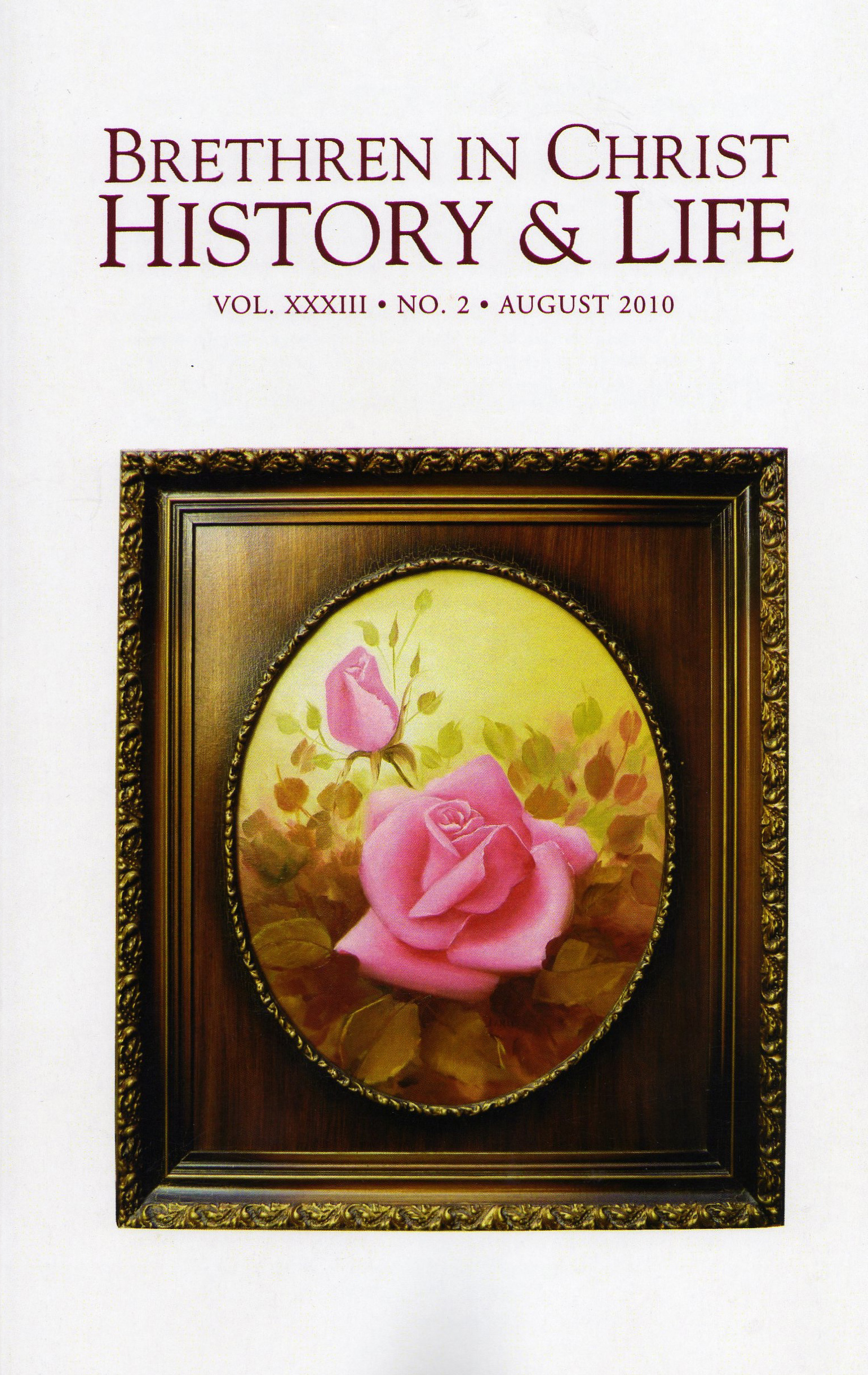 In spite of my heavy courseload this semester, I’m finally getting around to reading the August 2010 issue of Brethren in Christ History & Life.
In spite of my heavy courseload this semester, I’m finally getting around to reading the August 2010 issue of Brethren in Christ History & Life.
A couple of pieces immediately caught my attention:
• Dwight Thomas’ “They Brought a Kodak: The Earliest Photographs of Brethren in Christ Missionaries in Africa.” Thomas offers a cultural, historical, and technological examination of the earliest photographs produced by Brethren in Christ missionaries in then-Southern Rhodesia. It’s a brilliant piece, and one that I found especially significant given my coursework this semester in using material objects as historical “tools.” In the article, Thomas points out how early foreign workers capitalized on the new medium (controversial as it was in some parts of the church) as a tool for promotion and education of native people. He also demonstrates vividly that the mission of the Brethren in Christ who went to Africa was both to convert and to “civilize” native people.
• Ruth Myers Dourte’s “Reflections of an Octogenarian.” In this brief autobiographical article, Dourte — a pastor’s wife and professional counselor — reflects on almost ninety years of life within the Brethren in Christ Church. Her reflections are valuable for more reason than one, but I appreciate what they add to the body of literature being produced by now-retired individuals with life-long involvement in the denomination. This genre has been dominated by Brethren in Christ men, and I’m excited about the ways in which Dourte’s contribution might deepen our knowledge of that era of church life.
Readers: What are your favorite articles in this most recent issue of the journal, and why?

I, too, was fascinated by Dwight Thomas’ article. As a result of reading it, I now find myself looking at photographs in a completely new way. The article also added to my sadness that neither the denomination nor Messiah College have supported the archives at a level that has allowed for careful cataloging of all the wonderful photographs that are still waiting in boxes. Maybe Devin’s wonderful use of photographs in this blog will heighten appreciation for the treasures in the basement of the Murray Learning Resources Center.
I enjoyed all of the latest BIC History and Life but I think it was Ruth’s article I enjoyed the most. She grew up in the same generation as I although a bit older, but it brought back memories. The same lifestyle, church problems, home life etc. were so similar to my upbringing. Even though we are hundreds of miles apart I saw lots of similarities. However, the whole issue was interesting to me.
I always read them cover to cover, but the biographies interest me the most. I often know the author or person being written about, so that makes it even more interesting for me. But even when I do not know the person, I appreciate the glimpses into the past in relation to church history.
Regarding Dwight Thomas’ article, I was intrigued with his approach to photography on the early mission fields, and it took me back to the early 70’s when I worked in the Archives and Dr. Wittlinger at times had me going through old photographs to write names on the backs. I well remember feeling awestruck as I handled the aging sepia prints.
Yes, unfortunately the Archives is understaffed and behind in the cataloging. Some of this can be helped if more would volunteer there, people who knew and remember the people and places in the old photos. Even one half day a week would be a great help, and I think most people would enjoy participating in the projects.
Thanks for these comments, folks.
The Archives have been on my mind quite a bit in recent days. This morning a fellow grad student and I attended a workshop on archives that got me thinking about the many ways in which our archive could suffer in the ten-to-twenty years to come if we do not soon build a digital collection. While the jury should still be out on how exactly to digitize (there is considerable debate about the specifics within the archivist/public history community), we need to figure out a way to make our resources available to the public in a responsible way that shares authority. The archivist is only one player in the “game” of preserving the past.
Karen, your suggestion about volunteers is a great one.
Good thoughts all around!